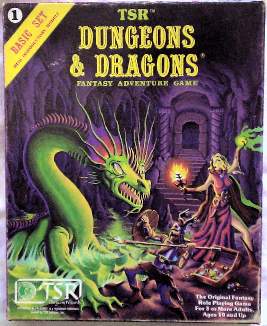I spent a bit typing up the content of “The Barbarian Tribes and the Great Migrations” that I posted a few days ago as scans of the original handwritten pages from 2001. (Asking folks to try to decipher my handwriting may be asking a bit too much.)
“World of Granjor: 2002
9/2/2001
The Barbarian Tribes and the Great Migrations
The majority of the humans of Holothom in the Age of Elves and Men are descended from tribes from eastern Yarta that crossed the Iralu Mountains from three to four centuries before the start of the age.
Western Yarta was already inhabited by elves, dwarves, gnomes, halflings, and various humanoids such as orcs and goblins, when the first humans arrived. These were the Iral, semi-nomadic hunter-gatherers, who started crossing the Iralu Mountains about eight centuries before the beginning of the Age of Elves and Men.
The Iral spread across the central and southern regions, but were not very numerous until after they learned agriculture, probably from the halflings. At some point afterwards, the Iral crossed over to the western islands as well, presumably having learned how to build and sail small ships from rare contacts with elves.
In southern Yarta, the Carinthian Empire became entangled in a long series of conflicts with the Himarkan Empire. A tribe somewhat related to the Iral, the Tlanta, migrated away from the constant warfare ravaging their lands north of Carinthia and crossed the Iralu Mountains about four centuries after the Iral. Since the Iral already occupied the central and southern lands, the Tlanta settled in the north.
A generation later, the Himarkans invaded the Carinthian province of Yzonda. Conspicuous in the invasion force were several thousand barbarian warriors called the Vogul.
It would seem that the entire Vogul tribe had been recruited by the Himarkans and promised new lands in Yzonda after the Carinthians were driven out. The invasion met with initial success, largely because the native Yzondans rose in revolt against several Carinthian garrison towns while the soldiers were confronting the invaders. The Vogul and their families were settled in northern Yzonda as promised, but a Carinthian counter-invasion some five years later drove the Vogul northwards into the southern Iralu Mountains.
Unsupported by the Himarkans and greatly outnumbered, the Vogul crossed into western Yarta in search of a new home. Over the next twenty years, they battled the Iral, goblins, and elves, usually winning their battles but lacking the numbers to occupy and defend and sizable land. Reaching the western shore, the Vogul crossed to the largest of the western islands and managed to seize the southern portion, driving the Iral inhabitants into the less desirable northern areas.
Half a century after the Vogul came the Duvra. The Duvra were a large barbarian nation located directly to the northwest of Carinthia proper. Due to their long proximity to the Carinthians, the Duvra were more technically and economically advanced than their former eastern neighbors, the Tlanta. Considered a friendly, though autonomous, people by the Carinthian Empire, the Duvra were natural allies during the Himarkan Wars, serving as a buffer that prevented any land-based Himarkan invasion of the Carinthian peninsula.
The Duvra Migration
During a prolonged lull in the Carinthian – Himarkan wars, the population of the Duvra rapidly increased. Population pressures led to the tribe splitting in two, with approximately a quarter of the Duvra migrating westwards along the southern passes earlier taken by the Vogul.
These “West Duvra” themselves split into two major groups within only a few generations. Those in the southern lands interbred with the Iral already present, and focused heavily on farming, due to the wetter and warmer climate. Those in the central lands were not as numerous, so little interbreeding with the Iral occurred; the climate was not as suited to heavy farming, so herding was equal in importance to farming.”





















Pingback: The Oldest Holothom Work | almostoldschool - retro RPG blog
Pingback: Setting Riff: Holothom – The Short Version | almostoldschool - retro RPG blog